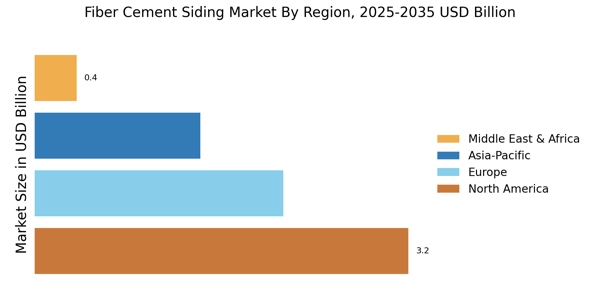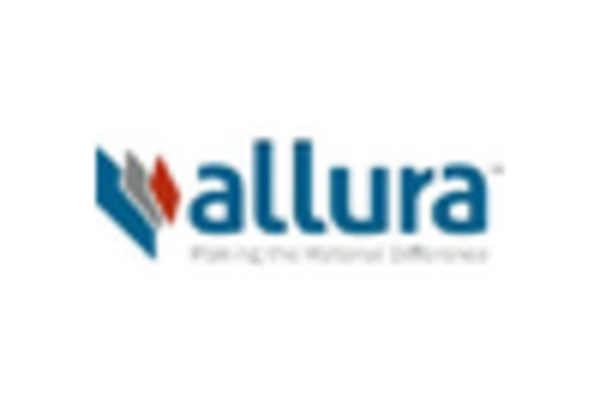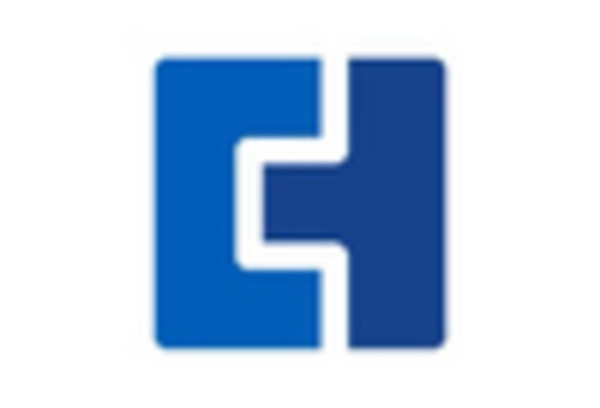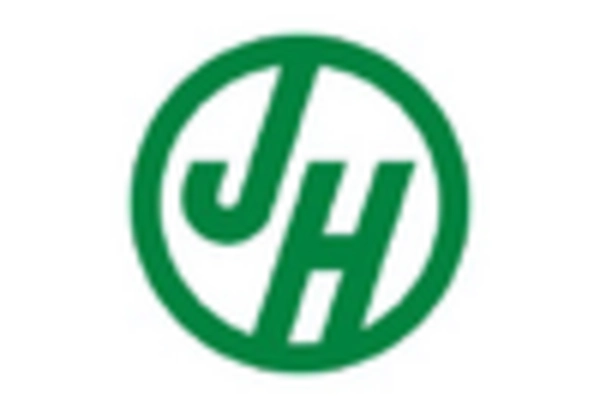Regulatory Support
Regulatory support for energy-efficient building practices is increasingly influencing the Fiber Cement Siding Market. Governments are implementing stricter building codes and offering incentives for the use of energy-efficient materials, which includes fiber cement siding. This regulatory environment encourages builders and homeowners to opt for materials that contribute to energy savings and lower utility costs. For instance, fiber cement siding's insulation properties can help reduce energy consumption, aligning with governmental goals for sustainability. Market analysis indicates that regions with stringent energy efficiency regulations are witnessing a surge in fiber cement siding adoption, suggesting that regulatory frameworks play a crucial role in shaping market dynamics.
Sustainability Focus
The increasing emphasis on sustainable building materials is a pivotal driver for the Fiber Cement Siding Market. As environmental concerns gain traction, builders and homeowners are gravitating towards materials that offer durability and low environmental impact. Fiber cement siding, composed of cellulose fibers, cement, and sand, is recognized for its longevity and resistance to rot and pests. This material's ability to withstand harsh weather conditions further enhances its appeal. According to recent data, the demand for sustainable building materials is projected to grow at a compound annual growth rate of 10% over the next five years. This trend indicates a robust market potential for fiber cement siding, as it aligns with the broader movement towards eco-friendly construction practices.
Aesthetic Versatility
The aesthetic versatility of fiber cement siding is another significant driver within the Fiber Cement Siding Market. This material can be manufactured to mimic various textures and finishes, including wood, stone, and stucco, allowing homeowners to achieve their desired look without compromising on durability. The ability to customize colors and styles makes fiber cement siding an attractive option for both new constructions and renovations. Market data suggests that approximately 30% of homeowners prioritize aesthetics when selecting siding materials, indicating a strong preference for products that offer both visual appeal and functional benefits. This versatility not only enhances property value but also caters to diverse architectural styles, further solidifying fiber cement siding's position in the market.
Technological Advancements
Technological advancements in manufacturing processes are propelling the Fiber Cement Siding Market forward. Innovations such as improved formulations and production techniques have enhanced the performance characteristics of fiber cement siding, making it more resistant to moisture, fading, and impact. These advancements have led to the development of lighter and easier-to-install products, which appeal to both contractors and homeowners. Recent statistics indicate that the market for advanced building materials is expected to reach $200 billion by 2026, with fiber cement siding capturing a notable share due to its enhanced properties. As manufacturers continue to invest in research and development, the fiber cement siding market is likely to experience sustained growth driven by these technological improvements.
Rising Construction Activities
The resurgence of construction activities across various sectors is a key driver for the Fiber Cement Siding Market. As urbanization continues to expand, there is a growing demand for residential and commercial buildings, which in turn fuels the need for durable and aesthetically pleasing siding options. Recent data shows that construction spending is projected to increase by 5% annually, with a significant portion allocated to exterior finishes. Fiber cement siding, known for its resilience and low maintenance requirements, is well-positioned to meet this demand. The ongoing trend of renovating existing structures also contributes to the market's growth, as homeowners seek to enhance their properties with long-lasting materials.


















Leave a Comment